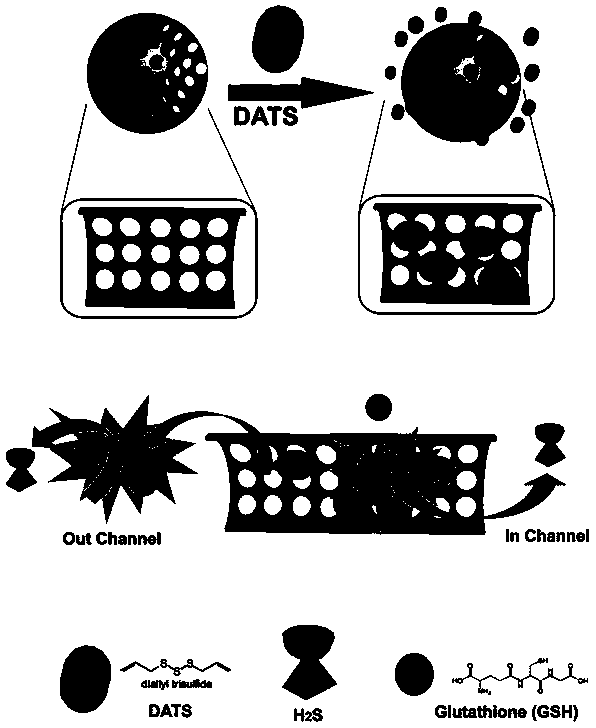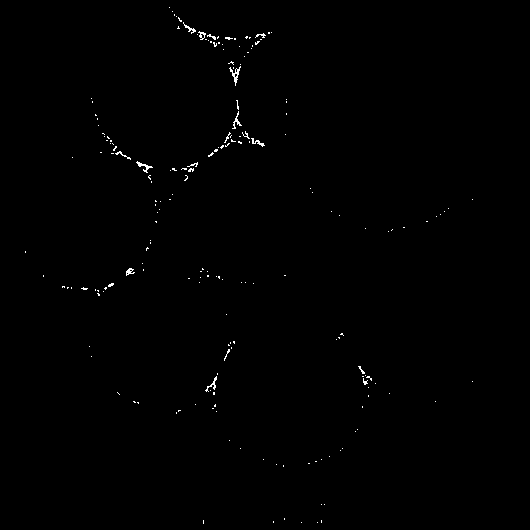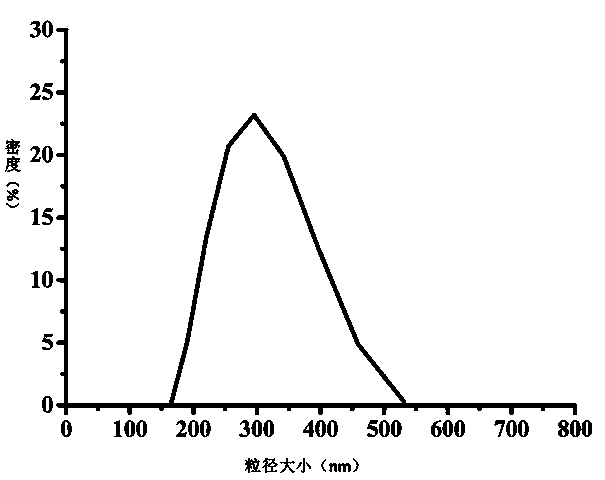Controlled-release hydrogen sulfide donor as well as preparation method and application thereof
A hydrogen sulfide donor and hydrogen sulfide technology, applied in the field of molecular biology, can solve the problems of limiting the application of hydrogen sulfide donors, fast release speed, and non-adjustable
- Summary
- Abstract
- Description
- Claims
- Application Information
AI Technical Summary
Problems solved by technology
Method used
Image
Examples
Embodiment 1
[0027] Example 1 Preparation of Ordered Mesoporous Silica Nanoparticle Material (MSN)
[0028] Add 300 mL of deionized water, 2.1 mL of 2 mol / L sodium hydroxide solution, and 0.6 g of template agent cetyltrimethylammonium bromide (CTAB) into a 500 mL three-necked flask, in a constant temperature water bath at 80°C, 200 rpm / minute mechanical stirring. After 1 h, 3 mL of tetraethyl orthosilicate (TEOS) was added. React for two hours, turn off heating and stirring, and the product is separated by centrifugation, and washed twice with deionized water and absolute ethanol. Then the product was dispersed in 100 mL of ethanol, 1 g of ammonium nitrate was added, and stirred at 80° C. for 2 hours to remove the template agent CTAB. Wash twice with ethanol and several times with water.
Embodiment 2
[0029] The synthesis of embodiment 2 DATS-MSN
[0030] Take 10 mg MSN, ultrasonically disperse it in 2 mL water, add 5 μL DATS, and stir magnetically. After 12 hours, the product is centrifuged, and the supernatant is discarded to obtain drug-loaded particles, namely DATS-MSN.
Embodiment 3
[0031] Embodiment 3 DATS-MSN material characterization
[0032] The size and surface structure of DATS-MSN can be determined by high-resolution transmission electron microscopy (HRTEM, JEM-2100F). The dispersion index (PDI) was obtained by analyzing the particle size distribution with an Autosizer 4700 (Malvern) instrument (25°C, 5 μg / mL). BET (Multipoint Brunauer, Emmett, and Teller) analysis was used to calculate the surface area-to-mass ratio of MSN.
PUM
 Login to View More
Login to View More Abstract
Description
Claims
Application Information
 Login to View More
Login to View More - R&D Engineer
- R&D Manager
- IP Professional
- Industry Leading Data Capabilities
- Powerful AI technology
- Patent DNA Extraction
Browse by: Latest US Patents, China's latest patents, Technical Efficacy Thesaurus, Application Domain, Technology Topic, Popular Technical Reports.
© 2024 PatSnap. All rights reserved.Legal|Privacy policy|Modern Slavery Act Transparency Statement|Sitemap|About US| Contact US: help@patsnap.com










